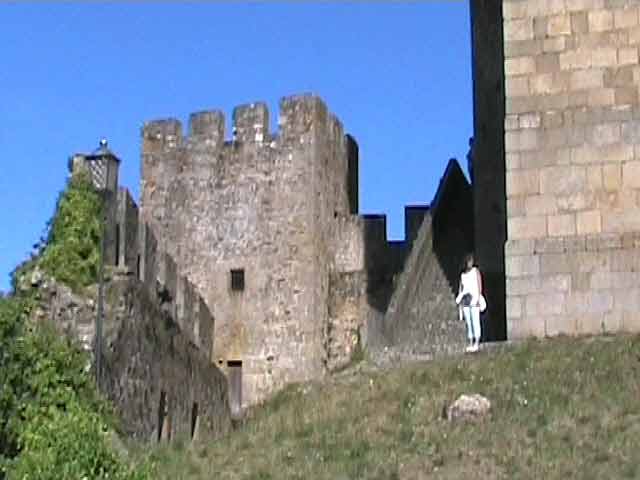The Lugo province
The district of Lugo is Galicia's largest and most northern province with a population of over 400 000 inhabitants. Lugo city is the regions most inland provincial capitol and the province as a whole has an economy which still relies heavily on farming and particularly the production of cattle meat for its livelihood.

Lugo's eastern boundary borders the "Asturias", whilst to the north is the Atlantic Ocean and almost one hundred kilometers of coastline that face the "Mar Cantabrico". A Coruna and Ourense also share provincial boundaries with Lugo to the west and south respectively. Left, the remains of an old tower in Lugo's southern town of Monforte de Lemos (close to Ourense).
Visiting Lugo
Tourism in Lugo, whilst increasing in popularity, does not yet rival that seen in the greater "A Coruna" conurbation, but an infrastructure of tourist offices provides local and provincial sources of information about the area's sightseeing attractions – of which there are many.
The distance and traveling time from "Santiago de Compostela" to Lugo will depend on which part of this province you are heading for. If you are traveling to its capitol, it will take you around one and a half hours by car on a route that combines limited motorway travel with spectacular scenery on a fairly direct country road. For part of this journey, you will also shadow the route of one of Galicia's "Caminos" and you will pass many pilgrims and see the Inns and hostels in which they lodge.
Road congestion on route to Lugo is something you need not worry about. Whilst the city of Lugo is busy, all routes that lead to it are lightly trafficked and the journey should be relaxing and stress free.
Scenery and attractions
We feel that Lugo's inland scenery is perhaps the most spectacular of Galicia's four provinces. On departing Santiago and traveling to Lugo you climb to a considerable elevation and then seem to continue on a never ending plateau as you voyage through the area.
Impressive mountainous vistas, forests and meadow land become common place, as does the continuous procession of cane carrying pilgrims on route to Santiago's cathedral. If you want to stop off for some refreshment or something to eat, there will be no shortage of road side taverns, eateries and cafes. Lugo is also famed for its cuisine and its nationally recognized wines that bear a regional seal of guaranteed quality.
Exploring provincial Lugo is not something you can do in a day. If you really want to find out what this province is about, you need to visit some of its towns and villages. You also need to take into account that many of these places, especially those in Lugo's south, may be closer to a neighbouring province like "Ourense". This is certainly true of the hill top monastery town of "Monforte de Lemos", and you would be best advised to visit these places from outside Lugo itself.
Although Lugo province has much to offer, including its spectacular walled capitol, it is perhaps not the best location from which to base a Galician vacation. To any holiday maker with a car, the whole of Galicia is accessible, but Santiago or one of the many towns and cities in "A Coruna" province will probably offer a better exploration base.
Return to Lugo home page.

